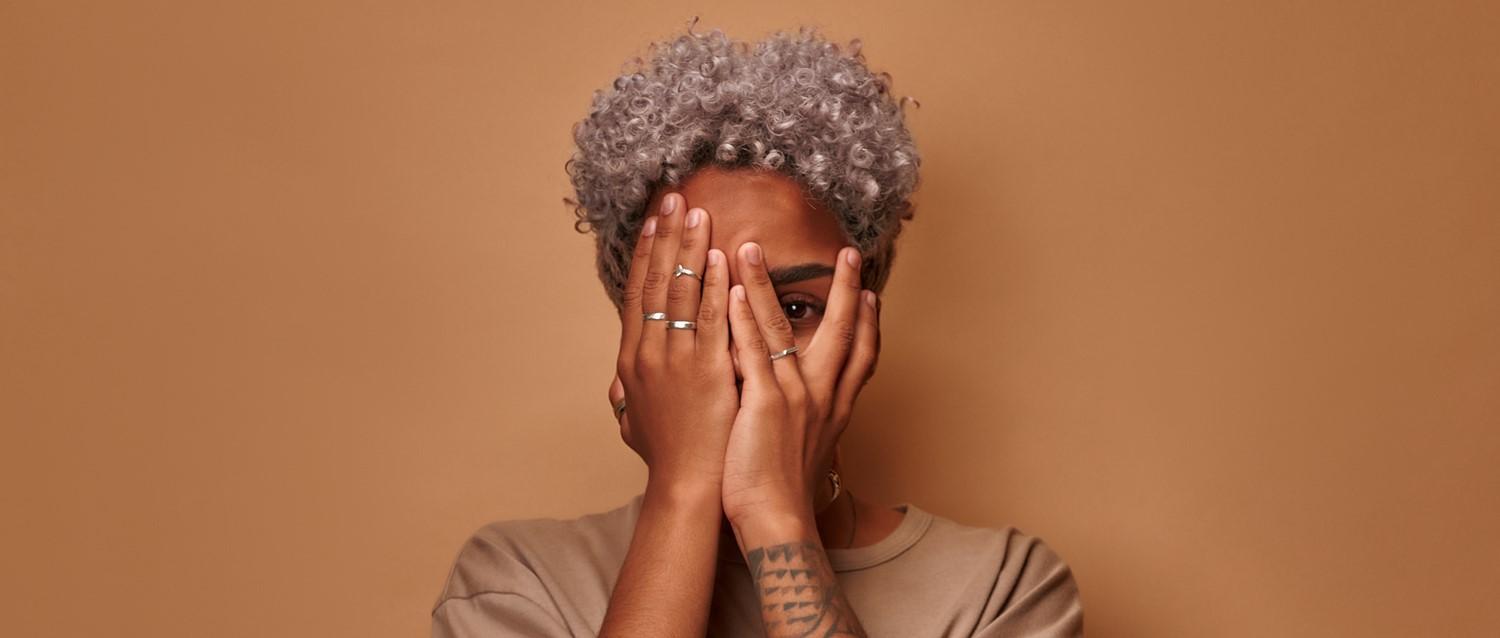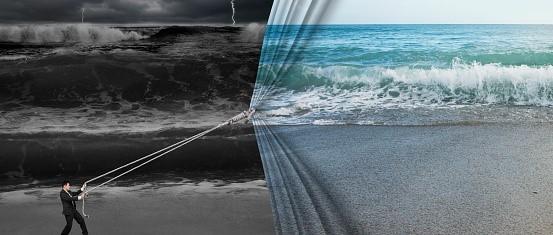
A fear of holes: what triggers trypophobia?
Peer reviewed by Dr Krishna Vakharia, MRCGPAuthored by Amberley DavisOriginally published 13 Jan 2023
Meets Patient’s editorial guidelines
- DownloadDownload
- Share
- Language
- Discussion
If you're more uncomfortable around sponges than spiders, more disgusted by bubbles than blood, or fear honeycomb over heights, then you might have trypophobia. A fear of tightly packed holes is the number one phobia in the UK. But why do so many of us have this seemingly unreasonable fear? And what everyday objects can trigger it?
In this article:
Continue reading below
What is trypophobia?
If you have trypophobia you feel fear, disgust, or discomfort when you see clusters of small holes, bumps, or circles.
The term trypophobia is relatively young. It emerged from an online chat forum in 2005 when lots of participants claimed to have a shared irrational aversion to items with closely packed holes.
Trypophobia isn't recognised as an official phobia in the Diagnostic and Statistical Manual of Mental Disorders (DSM-5)1. This emotional reaction also doesn't seem to quite fit the definition of a phobia, which is a type of anxiety disorder - it appears that disgust, not fear or anxiety, is the main symptom in most people2.
How common is trypophobia?
We may not fully understand it, but trypophobia is the most common so-called phobia in the UK3. While more research is needed to class this disgust or fear of holes as a mental disorder, studies do demonstrate that many people experience real and measurable physical reactions when shown trypophobia triggers - a quickened heart rate, for example4.
Continue reading below
What are the symptoms of trypophobia?
Whether disgust or fear is your primary emotional response to seeing clusters of holes, this reaction tends to be strong enough to bring on some of the physical symptoms associated with anxiety. Phobia specialist Christopher Paul Jones explains:
"Trypophobia can make someone feel nauseous as the brain struggles to process the holes. They may also feel dizzy, may tremble, and have other symptoms of disgust or fear."
These other symptoms include:
Increased heart rate.
Goosebumps.
Chills.
Panic.
Gagging.
Sweating.
A strong desire to get away from the image or object.
In severe cases of trypophobia, the visual of tightly packed holes may lead to a panic attack.
What can trigger trypophobia?
Not everyone has the exact same trypophobia triggers. For example, some people are fine looking at surfaces with holes the same size - like those on a shower head - but react when the holes are irregularly shaped - like those on a crumpet.
What is clear is that this fear of holes relates only to groups of small holes close together or repetitive patterns. A single hole in the wall or a two or three spaced out punctures on a piece of paper won't cause the same response.
This still leaves a great number of common objects and surfaces as potential trypophobia triggers. You may encounter these in real-life or experience the same reaction when they appear on TV or in trypophobic images.
Examples include:
Crumpets.
Sponges.
Leopard spots.
Soap bubbles.
Honeycomb.
Swiss cheese.
Skin pores or lesions.
Strawberries.
Coral.
Seeded breads.
Gravelled roads.
Pomegranates.
Continue reading below
What causes trypophobia?
Experts agree that trypophobia is to do with how your brain processes and interprets the visual of clustered holes.
The dangerous animal theory
"Trypophobia could be caused by the brain associating closely packed holes with danger," says Paul Jones. It may be that some people have an exaggerated and over-generalised primal response to these patterns because in nature these can be a warning sign5 - for example, many poisonous animals have similar patterns, such as the poison dart frog and the blue-ringed octopus.
Researchers have found that animals such as these share certain spectral qualities with trypophobic images. Spectral refers to the visual aspects, like having a high contrast of colours in certain patterns, that affect how your brain interprets images6.
If you've ever wondered what a crumpet and a leopard have in common, this may just well be your answer.
Other possible explanations
Paul Jones points out that scientists aren't set on one clear explanation for trypophobia. Many other theories exist, and more studies are needed.
For example:
According to Paul Jones, some scientists believe a disgust or fear of holes is triggered because of how the brain uses energy to look at these patterns.
Another theory is that trypophobia represents another kind of evolutionary response, this time to surfaces that resemble contagious skin diseases, which sometimes show as rashes or scabs. It could be that in some people, this triggers an over-active instinct to avoid the germs that could spread serious skin illnesses, like measles or smallpox5.
One thing that is clear is that, when it comes to causes, trypophobia doesn't fit comfortably in the specific phobia category. Most phobias - for example, having a fear of the ocean - are caused by factors such as trauma, genetics, or long-term anxiety.
How to manage trypophobia
Cognitive behavioural therapy (CBT) is usually the recommended primary treatment for phobias. However, Paul Jones points out that if your trypophobia doesn't appear to be rooted in a specific memory or trauma, exposure therapy may be more appropriate.
"During exposure therapy, someone is slowly exposed to the kind of things that they fear. This may start with looking at slides or pictures while a therapist provides treatment to help them cope. Then, they progress onto seeing the thing for real. For example, holding a sponge or some honeycomb," Paul Jones explains.
The idea is that the person confronts their phobias in a safe and supportive environment, in the hope that they can retrain the response of their brain when encountering their triggers.
Other management tools for phobias include:
Anxiety medication.
The practice of coping techniques – including breathing exercises and mindfulness.
If you feel that your aversion to closely packed holes is impacting your life, speak to your GP or a phobia specialist. They will be able to assess your trypophobia and help you to decide on a management plan that suits you.
Further reading
American Psychiatric Association: Diagnostic and statistical manual of mental disorders (DSM-5-TR).
Yorkshire Times: Trypophobia revealed as Brits' biggest phobia.
Le et al: Trypophobia: Heart rate, heart rate variability and cortical haemodynamic response.
Kupfer and Le: Disgusting clusters: trypophobia as an overgeneralised disease avoidance response.
Patient picks for Phobias and fears

Mental health
Thalassophobia: how to manage your fear of the ocean
Most people have some fear of the ocean - a natural survival instinct against the unknown that prevents you from jumping off a ship several miles offshore. But for people with thalassophobia, this fear runs so deep it affects their quality of life.
by Amberley Davis

Mental health
A fear of holes: what triggers trypophobia?
If you're more uncomfortable around sponges than spiders, more disgusted by bubbles than blood, or fear honeycomb over heights, then you might have trypophobia. A fear of tightly packed holes is the number one phobia in the UK. But why do so many of us have this seemingly unreasonable fear? And what everyday objects can trigger it?
by Amberley Davis
Article history
The information on this page is peer reviewed by qualified clinicians.
13 Jan 2023 | Originally published
Authored by:
Amberley DavisPeer reviewed by
Dr Krishna Vakharia, MRCGP

Ask, share, connect.
Browse discussions, ask questions, and share experiences across hundreds of health topics.

Feeling unwell?
Assess your symptoms online for free
Sign up to the Patient newsletter
Your weekly dose of clear, trustworthy health advice - written to help you feel informed, confident and in control.
By subscribing you accept our Privacy Policy. You can unsubscribe at any time. We never sell your data.